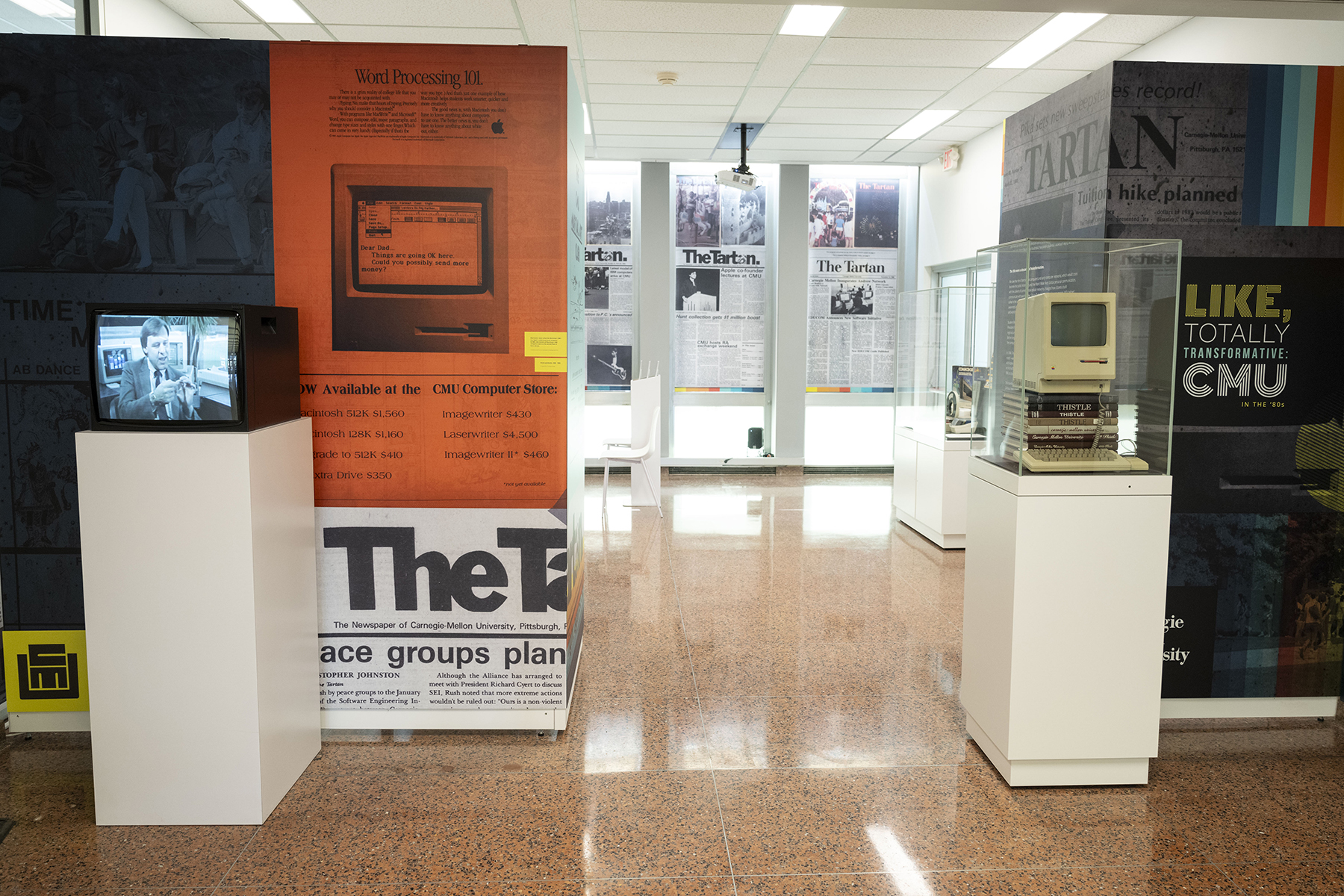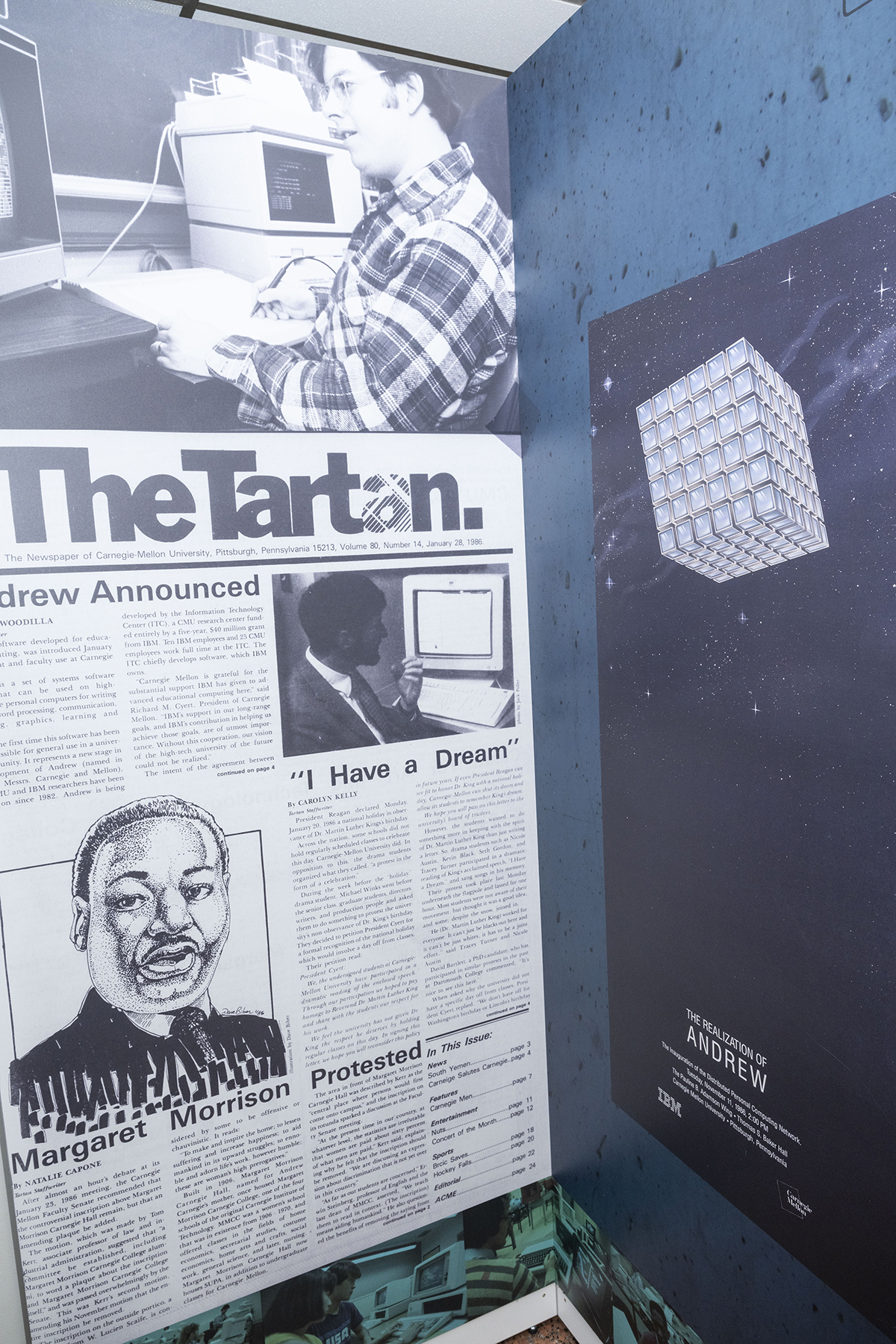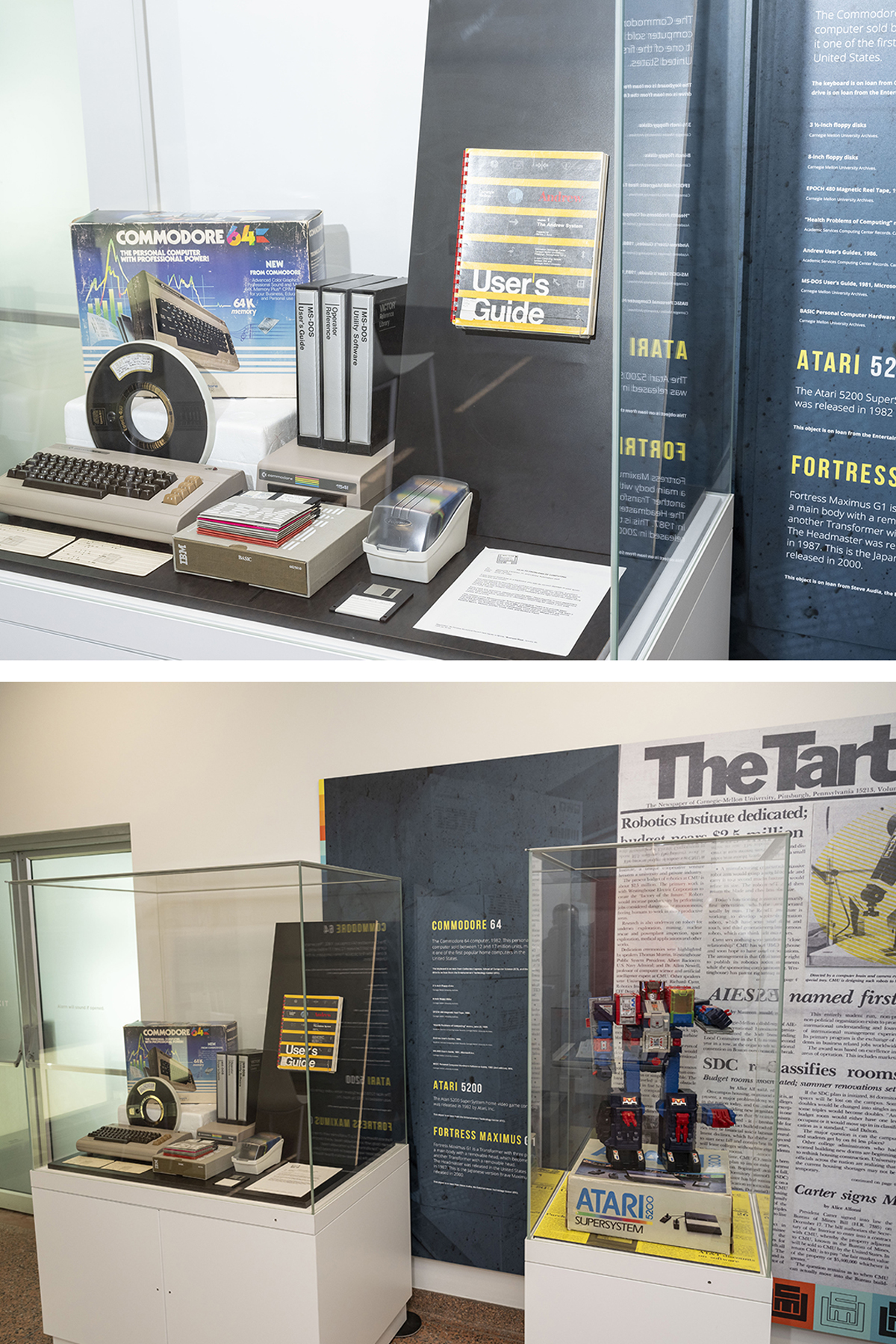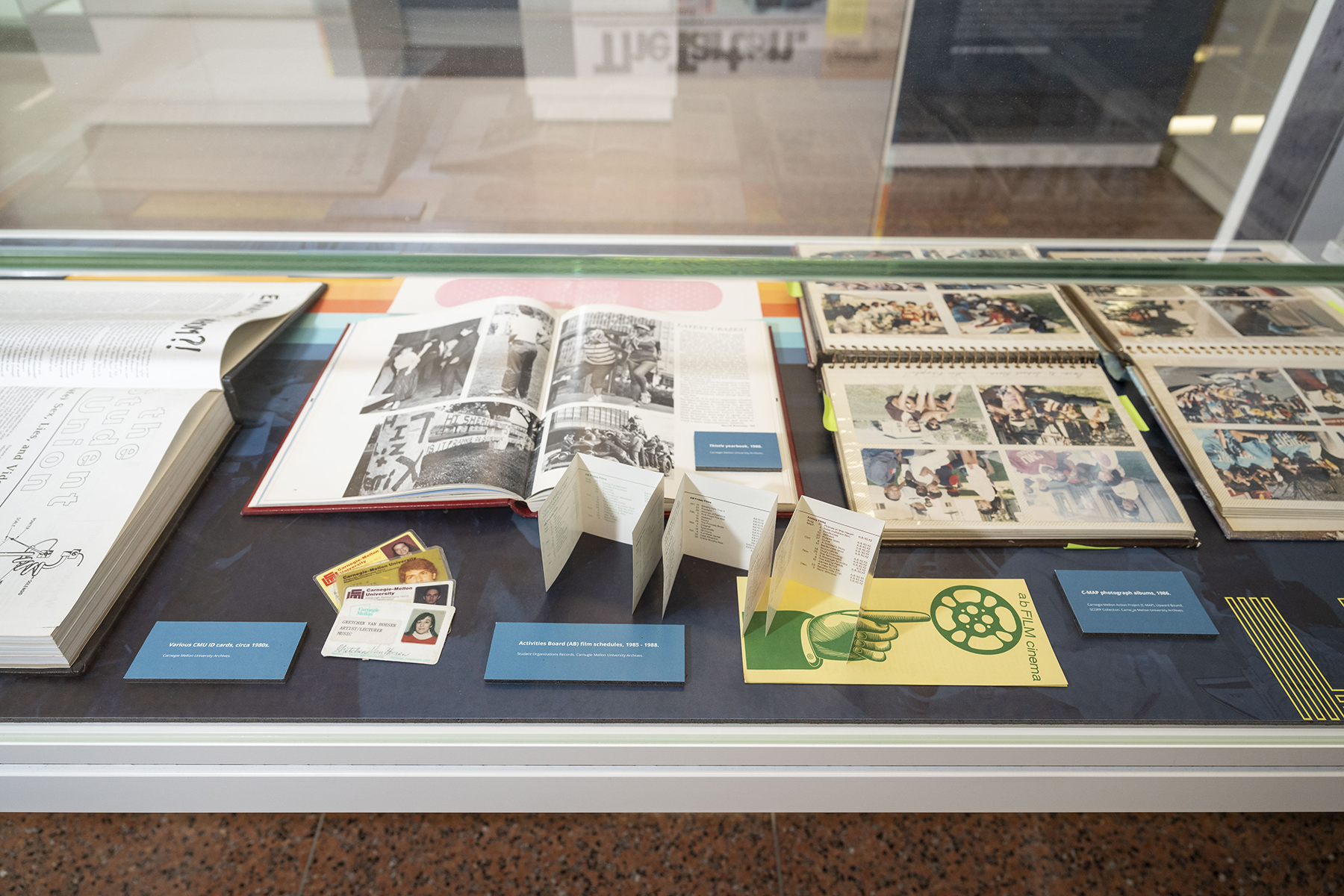
“Like, Totally Transformative: CMU in the ‘80s” exhibit explores how President Richard Cyert's vision at the start of the decade helped turn CMU from a regional university into an international leader in innovation, technology, and the arts where robotics, computer software, and the Internet became integral parts of the campus.
“The growth of the technology in these ten years on campus was so fast,” said Collections Archivist Emily Davis, who curated the exhibit. “Technology was now easy to use and accessible. This was a decade where the use of video was proliferating, and students went from working on time-sharing mainframes to personal computers in their dorms.”
The spread of this technology meant that the university and its students shared stories and connected with each other in ways that would have been impossible only years prior.
By the middle of the decade, the computer and technology revolution had reached beyond laboratories and into homes and campuses worldwide. In 1984, Terregator—the “world’s first rugged, capable, autonomous outdoor navigation robot”—was completing its field testing at CMU. In 1985, the university began working with Apple co-founder Steve Jobs to develop part of the Mach operating system that ran on his NeXT computer workstation.
Student life at Carnegie Mellon University reflected that technological and social change. One of the most significant transformations may have been how students, faculty, and staff migrated into a new digital life. In 1986, CMU launched the Andrew Project, a joint endeavor with IBM, to create one of the first university-wide computer networks and file systems. The network—named after Andrew Carnegie and Andrew Mellon—allowed users to access their files from any networked computer on campus and send electronic mail.


However, personal computers, new handheld video technology, and basic software tools weren’t just used in classrooms. Students experimented with newly commercialized tools to create their own media, such as videos recorded on VHS tapes and desktop-printed ‘zines, and passed their creations to their friends—a primitive precursor to modern social media.
“The 80s were a very novel time, especially on CMU’s campus,” Davis said. “Students could use message boards to communicate with each other. Video was now in the hands of students. It was no longer as cost-prohibitive for students to use some of these technologies to create their own forms of media.”
Associate Director, Creative Heidi Wiren Kebe worked to develop a visual language that represented the familiar bright color schemes from the 1980s and helped contextualize the social and political issues that grew out of this transformative decade using the Tartan front pages from throughout the decade.

“What’s interesting is that it was hard not to see parallels with today’s world,” Davis said. “CMU promoted Andrew as a way to revolutionize higher education and teaching in many ways that we’re talking about artificial intelligence now.
“There were Tartan headlines about commercial space travel and student protests that were not only political but also about university space and governance. It is a reminder that even with that transformation, the world hasn’t totally changed.”

“Like, Totally Transformative” will be displayed in the Hunt Library Gallery on the first floor from August 30, 2024, through July 11, 2025. For more information or to watch the videos, visit the exhibit’s website.
The exhibit includes a Macintosh 128K, Commodore 64 computer, Atari 5200 SuperSystem home video game console, a Fortress Maximus G1 Transformer, and Tartan headlines that track major happenings during the decade, and a 75-minute looped video that showcases part of CMU’s efforts to recruit students nationwide, the Andrew system, and a slice of life from The Cut and across campus.
The gallery was created in 2020, and an endowment was established to provide ongoing support for its exhibits, thanks to generous gifts from donors Michael (ENG 1968) and Lonna (CFA 1969) Smith.
By Brad King, Anniversary Exhibits and Publishing Managing Editor, and the exhibit’s Editorial Director.
